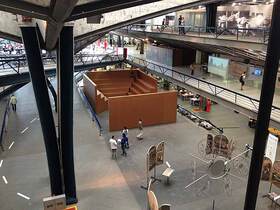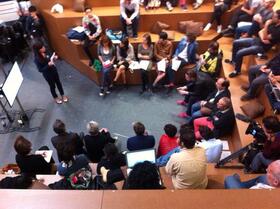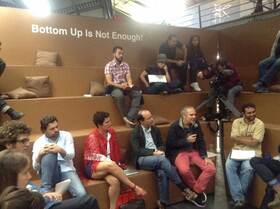The São Paulo Architectural Biennale with the central theme City: How to make, how to use was officially opened in October 2013. Crimson Architectural Historians together with The New Institute organised several debates, titled ‘Track Changes’. The basis for these discussions was the exhibition ‘The Banality of Good. Six Decades of New Towns, Architects, Money and Politics’ (co-curated by INTI), which was first shown in Venice (2012) and London (2013) and will be on show at the Danish Architecture Centre (DAC) in January 2014.
‘Track Changes’: In three days of public meetings a generation of architects and urbanists were gathered together that is connected through a common reaction to the political and economic crises that urban communities all over the world are facing. Whether working in the Favelas of South America, the Townships of South Africa or in the crumbling housing estates of Europe, this generation has replaced the large-scale top down masterplan and the iconic hypermodern building with the participative, bottom-up, temporary and flexible approach.
What does this global convergence of design attitudes mean? Are we really seeing an international shift that explains the shared values of our generation? Or is the consensus about participation and bottom-up just a fashion?
Three themes were discussed: ‘We the People’, ‘Bottom up is not Enough’ and What’s your Crisis? Projects and experiences from all over the world were shared, and a central role was given to the urban and political transformations the host city São Paulo is going through. The most important ambition was to take architecture and urbanism out of the ghettoes of academia and the black boxes of politics and business, and to put it back into the centre of public debate. Apart from the website, a documentary and a publication will be prepared, due beginning 2014.




